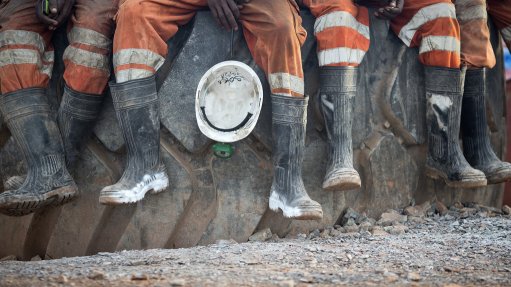
The South African mining industry has recorded its first ever fatality-free January, and its first full calendar month without a death, the Minerals Council South Africa reports. As of January 31, the industry has managed to go for 39 consecutive days without a fatality.
The industry has averaged nearly five deaths a year in the month of January since 2018. This is normally a difficult month for safety as mines restart after the year-end break.
“This is the first time in South Africa’s mining history that this occurred. Although a lot of effort went into our start-up campaigns, there’s a lot that still has to be done,” the Minerals Council’s CEO Zero Harm Forum chair Japie Fullard said on February 1.
The mining industry reported a record low 49 fatalities last year, down from 74 fatalities the year before. The largest contribution to the safety performance last year was the 70% decrease in fall-of-ground (FoG) fatalities, which has historically been a leading cause of deaths.
To ensure the trajectory for safety remains on a downward trend, the Minerals Council board has started monthly meetings to share learnings in successes and failures, maintaining a high degree of company leadership focus on safety initiatives developed internally and with the Minerals Council.
The Elimination of Falls of Ground Action Plan (Fogap) adopted by the Minerals Council board and CEO Zero Harm Forum in July 2021 is believed to have contributed a step change in performance.
Last year, there were six FoG-related fatalities, a 70% reduction from the 20 deaths the year before, and a 92% decline from 76 deaths in 2007. There was also a decline in the number of FoG injuries, which the Minerals Council said was a positive reflection on the efforts of the industry.
“We recognise that this reduction in FoG-related fatalities has been a group effort among employers, organised labour, the Department of Mineral Resources and Energy (DMRE), equipment suppliers and researchers. It’s only through collaboration that we will achieve our target of zero harm,” Fullard said.
The role of CEOs providing strong leadership, the adoption of leading practices and implementing research and development projects, making significant investments in the adoption of FOG-specific safety interventions and recognising the special role of rock engineers in mine design to limit FoG were major contributing factors in the improvement, he explained.
The Minerals Council emphasised that a key development was encouraging employees in their right to refuse to work in unsafe areas or to do dangerous work. It said that exercising this right leads to a change in workplace culture and morale, which in turn improves safe working behaviours.
The industry has invested heavily in eliminating FoG-related incidents. The Mine Health and Safety Council – a tripartite body comprising the Minerals Council, DMRE and organised labour – has invested R500-million in rock-related research over the past two decades, while the Minerals Council has committed R46-million over five years in its Fogap.
Moreover, mining companies have spent hundreds of millions of rands in innovative technologies and in sponsoring university research chairs.
Among the practices adopted by South Africa’s underground mines are permanent meshes held up with bolts in tunnels and working areas, brightly lit working areas so miners can check for dangers rather than just relying on their cap lamps, safer ways to remove loose rocks from the roofs and walls of tunnels and working areas, and improved methods to identify loose rocks.